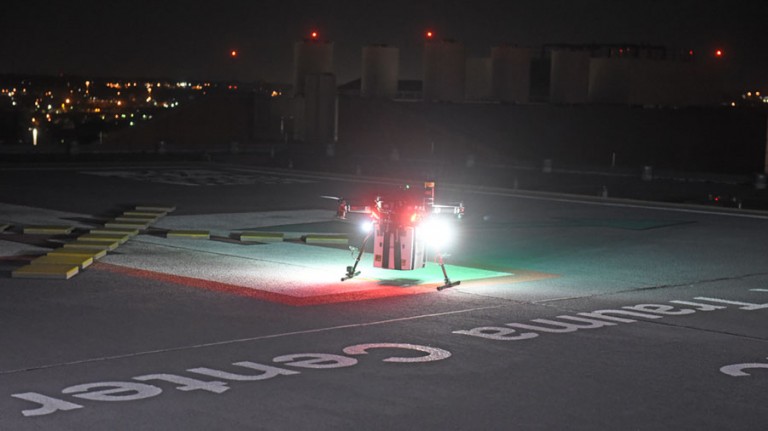Drones could get donor organs to recipients more quickly than traditional transport methods, increasing the likelihood that the organs will still be “viable” by the time they reach their destination.
The test: On April 19 a drone delivered a donor kidney to surgeons at the University of Maryland Medical Center, ferrying it from a hospital about three miles away. The kidney was then successfully transplanted into a patient with renal failure. It’s the first time a drone has been used to drop off an organ for a transplant.
The recipient: She is a 44-year-old woman from Baltimore who had spent eight years on dialysis before the procedure, the medical center said. She was discharged a few days afterward.
The technology: The drone was a custom-built model with eight rotors to ensure stability. The university created a special apparatus able to measure and maintain temperature, barometric pressure, altitude, vibration, and location, to ensure that the organ was kept in the best possible condition during the flight.
Before the test: The research team started by transporting saline, blood tubes, and other materials, before working their way up to transporting a healthy but nonviable human kidney.
A small but significant step: This isn’t the first time a drone has been used to deliver medical supplies, which must be stored in carefully controlled environments. For example, drones have been used to deliver medicines in Ghana and vaccines in Vanuatu.
However, organ transport is particularly sensitive. Organs can survive for only a few hours outside the body, so timing is crucial. In the US, nearly 114,000 people were waiting for an organ transplant as of 2018, and about 4% of organ shipments had an unanticipated delay of two or more hours. Of all the potential use cases for drone deliveries, getting organs where they're needed is a particularly compelling one.
Sign up here to get your dose of the latest must-read news from the world of emerging tech in our daily newsletter The Download.

